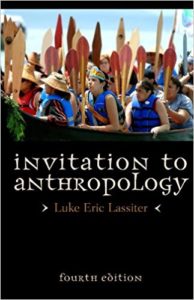
I generated some interests after reading “The ten faces of innovation” by the founder of IDEO, Tom Kelley, who talks about anthropologist. I chose an introduction book used in college called “An invitation to anthropology”.
This book contains 7 chapters. The first chapter introduces the history of anthropology and second chapter talks about the division of anthropology. The third chapter discusses the often-used fieldwork method called ethnography. The main purpose of first three chapters occupying almost half of this book is discussing the main structure of anthropology. The last three chapters (gender, marriage/family, and religion)are issues which anthropologists have interests in. Chapter 4 is talking about human history as a bridge to the last three chapters.
The author blended many stories with academic articles so that even non-professional reader could understand these terminologies with ease. Every chapter outlines article sources so that It’s convenient to find and search them if you want to learn more.
The application of anthropology exists everywhere. Using chapter 3, ethnography, as an example. Every anthropologist should experience several key steps(entrée → cultural shock → establishing rapport → cultural understanding) when doing field work. I’d once participated a cell group in a church. The brothers or sisters always give all new visitor a warm welcome. XXX is my group leader(entrée). One day I joined an outside activity held by this church. They taught us pronouncing strange voice, called tongue. Then, they healed and released us by speaking in tongue and pressing their hands on us. Some persons started crying, trembling and vomiting (cultural shock). They behaved nothing different when compared to non-Christian except for these special rituals. I made friends with them(establish a rapport). Afterward, I’d gradually understood charismatic experience gives them the energy to go ahead. They’ll use this kind of power to preach the gospel(cultural understanding).